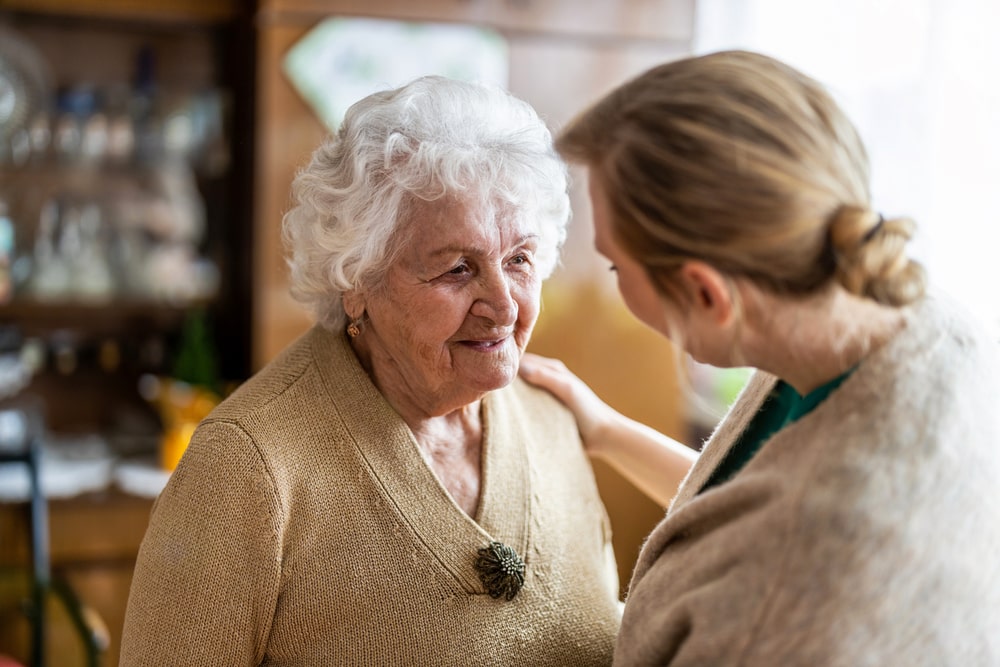
For those in hospice care, improving quality of life is an important goal. Much like music therapy, art therapy can bring joy to hospice patients and improve their mental and physical health.
While art has been used as a form of therapy and grief care in cultures around the world for hundreds of years, the term “art therapy” wasn’t used until the 1940s. In the decades since, art therapy has taken on new forms and been used in new ways, with formal training and licensing regulations now in place.
When used for those in hospice, art therapy can provide substantial benefits for patients and caregivers. Let’s take a closer look at art therapy in hospice care!
What is Art Therapy?

Art therapy uses the creative process to help alleviate pain and improve patients’ mental health. For those in hospice, it can improve quality of life, reduce some symptoms, and provide a way for patients to express their emotions.
Art therapy programs come in many different forms and can be tailored to a patient’s specific needs. Typically, art therapy involves drawing, painting, creating collages, or another artistic endeavor. An art therapist will often offer group or one-on-one sessions.
Benefits for Patients
The benefits of art therapy have been observed in many different studies, and researchers have seen physical, mental, and emotional benefits for patients. From reducing patient pain to helping patients come to terms with their diagnoses, here are a few of the main benefits:
1. Reduce Pain

Many patients who have participated in art therapy have reported decreased pain. This could be partially because art provides a distraction from the pain a patient feels. Creating art also releases endorphins, which can help block pain. Plus, the creation process involves movement, which encourages patients to actively engage with their art and the environment.
2. Increase Quality of Life
One of hospice care’s main goals is improving a patient’s quality of life, and art therapy does just that! Patients who participate in art therapy have said that they feel calm, entertained, and motivated throughout the process. Art therapy can also give patients a sense of empowerment and increase their self-worth, which improves their quality of life.
3. Express Emotions

When coming to terms with a terminal diagnosis, hospice patients may struggle to put their emotions into words. Art provides a creative outlet for patients to express their pain, confusion, and inner conflict, allowing them to communicate without words. This act of self-expression, especially with the guidance of a licensed art therapist, can help patients better understand the emotions they’re trying to process.
4. Improve Mental Health
Many patients in hospice struggle with mental health issues like anxiety and depression. Because art therapy causes endorphins to be released and encourages self-expression, it can also improve patients’ mental health. By strengthening positive feelings, alleviating distress, and helping patients relax, it can help reduce anxiety and depression.
5. Process Questions About Life

One of the hardest parts of receiving a terminal diagnosis is processing and accepting it. Many patients find themselves reviewing their lives, wondering if they left behind a meaningful legacy, or facing their fear of death. Art therapy can help patients face their questions and examine their feelings about life and death. Plus, the creative process gives the patient a piece of art that helps them leave a legacy for their loved ones.
6. Find Support
Many hospice patients struggle with loneliness and isolation. Receiving a terminal diagnosis can shift relationships and leave a patient feeling alone. Art therapy provides patients with the support of a licensed art therapist, who can help them process what they’re going through. Plus, group sessions can help a patient build community and receive support from others in similar situations.
Benefits For Caregivers

While most hospice art therapy programs are mainly for hospice patients, families and caregivers have also seen benefits. Seeing their loved one involved in art therapy can give them good memories to hold onto.
If a caregiver can participate, art therapy can be a great source of self-care, helping them cope with their own feelings of grief. Plus, if caregivers participate alongside their loved ones in hospice, they may be able to process any conflicts and open up about their emotions together.
In addition, caregivers can receive social support from the art therapist and other caregivers involved in the art therapy process. They can ask questions about their complicated emotions and find community with others in similar situations.
Processing a terminal diagnosis and entering hospice care can be difficult for both patients and caregivers. However, art therapy can improve quality of life and allow patients and caregivers to receive the support they need. Plus, it can help participants express their emotions and wrestle with the deep questions coming to the surface. Whether in a group setting or one-on-one with a licensed therapist, art therapy can be an excellent option for those in hospice to explore.



















Recent Comments